Oxybutynin dosages: 5 mg, 2.5 mg
Oxybutynin packs: 30 pills, 60 pills, 90 pills, 120 pills, 180 pills, 270 pills, 360 pills

Purchase 2.5 mg oxybutynin free shipping
Deficiencies in coagulation elements, vitamin K deficiency, dysfibrinogenemia, and systemic fibrinolysis can all contribute to impaired hemostasis. The number and diploma of clotting factor deficiencies replicate the severity of liver damage. Being an acute section reactant, fibrinogen synthesis is mostly preserved except liver disease is severe. For these coagulation elements, vitamin K is required as a cofactor in -carboxylation, a course of that converts inactive precursors to biologically lively factors. Vitamin K deficiency associated with liver illness can happen as a consequence of malnutrition, malabsorption, use of antibiotics, or biliary tract obstruction. Furthermore, these parameters have been applied to estimate bleeding danger and information remedy. Several significant limitations exist in making use of these laboratory parameters in the context of liver illness. Third, as a outcome of these parameters suboptimally predict bleeding, the value of correcting these abnormal values with plasma or procoagulant agents turns into uncertain. Liver illness ends in deficiencies of procoagulant proteins but also deficiencies within the natural anticoagulant proteins, together with antithrombin and proteins C and S. Small research have demonstrated normal thrombin technology and potential resistance to thrombomodulin in cirrhotic patients. Aberrant polymerization of fibrin monomers may be associated to extra sialic acid residues on fibrinogen, interfering with the exercise of thrombin. The presence of hyperfibrinolysis in liver disease and its contribution to bleeding danger is controversial. Shortened entire blood euglobulin clot lysis time and elevated ranges of D-dimer, fibrin, and fibrinogen degradation products are suggestive of increased fibrinolysis. These abnormal laboratory indices have been noticed in nonbleeding sufferers however are seen extra incessantly in bleeding patients and have been reported to correlate with gastrointestinal bleeding, severity of liver failure, and variceal dimension. Hyperfibrinolysis doubtless plays a more important function in hemostasis in the context of liver transplantation. Red blood cell transfusions should be supplied to preserve an sufficient hemoglobin or hematocrit and for symptomatic anemia. An effort should be made to preserve platelet counts higher than 50 to 70 � 109/L with active bleeding or earlier than invasive procedures. Patients with cirrhosis usually have smaller platelet increments in response to transfusions attributable to splenic sequestration. Vitamin K can be given intravenously for earlier onset of motion but carries the small threat of anaphylaxis. Ecarin is derived from Echis carinatus snake venom and may activate prothrombin irrespective of -carboxylation. Although it could be cheap to use vitamin K replacement alone in asymptomatic sufferers, it should be considered as an adjunct to different therapy in actively bleeding sufferers. Despite its widespread use, its scientific effectiveness in reducing bleeding has not been supported by knowledge from randomized controlled trials. However, the efficacy of this method has not been totally studied in controlled trials. One unit of cryoprecipitate for every 10 kg of physique weight increases plasma fibrinogen by approximately 50 mg/dL. Although antifibrinolytic brokers might be thought of in the setting of hyperfibrinolysis, no randomized trials have demonstrated efficacy or safety exterior the setting of liver transplantation. Aprotinin and tranexamic acid have been shown to cut back blood loss and the necessity for transfusion in liver resection and transplantation. Data are limited to case stories and small, uncontrolled research describing enchancment in coagulation parameters, subjective clinical enchancment, and safe administration in patients with liver disease. Management of Coagulopathy in Liver Disease � Actively bleeding sufferers ought to be adequately resuscitated and stabilized with crystalloid or colloid solutions (or both). The need for extra specialized exams might be dictated by the scientific state of affairs and response to remedy. Coagulation parameters ought to be monitored to document impact and decide the timing and want for added units.
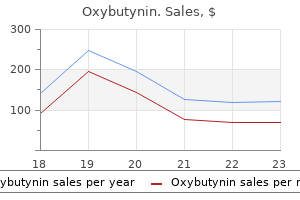
2.5 mg oxybutynin with mastercard
In contrast, thrombosis reflects a pathologic process associated with intravascular thrombi that fill the lumens of arteries or veins. Bleeding can also occur if the platelet or fibrin clot is prematurely degraded because of extreme fibrinolysis; a disorder of tertiary hemostasis, the options distinguishing disorders of primary, secondary, and tertiary hemostasis are outlined in Table 124-1. Hemorrhagic disorders may be inherited or acquired, and the medical and laboratory analysis of such issues is detailed in Chapters one hundred thirty and 131, respectively. Because the platelet plug offers the primary line of protection in opposition to bleeding, patients with issues of major hemostasis often current with immediate bleeding after harm and petechiae, pinpoint hemorrhages, may be famous. Thrombocytopenia could be the results of decreased manufacturing, which might occur due to failure, infiltration, or fibrosis of the bone marrow (see Chapters 27 and 28); increased platelet destruction; or irregular distribution due to platelet pooling in the spleen (see Chapter 134). Platelet perform problems include problems of (1) platelet adhesion, similar to von Willebrand illness (see Chapter 140) and BernardSoulier syndrome (see Chapter 127); (2) thromboxane synthesis; (3) secretion, similar to alpha or dense granule deficiency or aspirin-like secretion defects; (4) aggregation, similar to Glanzmann thrombasthenia (see Chapter 127); or (5) procoagulant activity (Scott syndrome) in which the platelets fail to assist clotting factor advanced meeting (see Chapter 128). Acquired disorders of platelet perform can happen in sufferers taking medicine that impair platelet function, similar to aspirin or nonsteroidal antiinflammatory medication, or in sufferers with uremia, paraproteins, or myelodysplastic or myeloproliferative problems (see Chapter 132). Bleeding can also occur with irritation or malformations of the blood vessels or abnormalities of the connective tissue supporting the blood vessels. Inflammatory disorders embrace Henoch-Schonlein purpura (see Chapter 152) and the vasculitis that occurs with paraproteins or cryoglobulins or in patients with systemic lupus erythematosus or different immune issues. Telangiectatic vessels can often be seen in the oral and nasal cavities of sufferers with this disorder and bleeding episodes, primarily from the nostril and gastrointestinal tract, are common. Abnormalities of the connective tissue matrix supporting the blood vessels embody Marfan syndrome, Ehlers-Danlos syndrome, and pseudoxanthoma elasticum. Disorders of Secondary Hemostasis Secondary hemostasis depends on rapid technology of enough quantities of thrombin to generate a fibrin mesh that not solely consolidates the platelet aggregates that form at sites of vascular harm however can be stable enough to provide a barrier that stops leakage of blood from the broken blood vessel. Management of hemophilia becomes more sophisticated if patients develop inhibitory antibodies that attenuate or abolish the exercise of the infused factor (see Chapter 138). The medical and laboratory evaluation of such sufferers are detailed in Chapters 130 and 131, respectively, and their therapy is printed in Chapter 116. Acquired deficiencies of coagulation elements may finish up from decreased synthesis due to severe liver illness, vitamin K deficiency or consumption of medication that intrude with vitamin K metabolism, consumption because of extreme activation of coagulation. Congenital problems of fibrinogen include absence or low ranges of fibrinogen (afibrinogenemia and hypofibrinogenemia, respectively) or synthesis of a dysfunctional protein (dysfibrinogenemia). Acquired problems of fibrinogen embody decreased synthesis or production of an irregular fibrinogen and elevated fibrinogen consumption or the presence of inhibitors that intervene with fibrin polymerization, such as paraproteins or autoantibodies, notably in patients with systemic lupus erythematosus or different immune disorders or elevated ranges of fibrin(ogen) degradation products. Incorporation of thrombi into plaques promotes plaque progress, and decreased endothelial cell manufacturing of heparan sulfate-which normally limits smoothmuscle proliferation-contributes to plaque growth. Intracardiac Thrombosis Thrombi can type within the left ventricle after transmural myocardial infarction or with an aneurysm or dyskinetic ventricle or in the left atrial appendage, notably in patients with atrial fibrillation (see Chapter 149). Damage to the endothelium after myocardial infarction and irregular blood move are the major triggers for left ventricular thrombus formation. With speedy atrial fibrillation, there also is stasis and turbulent blood flow within the left atrial appendage, which is a long, blind-ended trabeculated pouch. The era of thrombin creates a local hypercoagulable state that doubtless promotes thrombus formation on the irregular endothelium. Embolization of these thrombi to the mind is a standard reason for ischemic stroke and is the main cause of mortality and morbidity in patients with atrial fibrillation. Disorders of Tertiary Hemostasis Tertiary hemostasis depends on the generation of plasmin, which degrades fibrin and restores blood circulate in damaged vessels. Premature lysis of fibrin in hemostatic plugs can lead to bleeding; this could happen systemically or can be localized (Table 124-4). More commonly, systemic hyperfibrinolysis is secondary to activation of coagulation by procoagulants such as tissue factor. Venous Thrombosis the causes of venous thrombosis include those related to hypercoagulability, which could be genetic or acquired, and the primarily acquired threat components, corresponding to superior age, obesity, or most cancers, that are related to immobility (see Chapters 142 and 144). Inherited hypercoagulable states and these acquired risk components combine to set up the intrinsic threat of thrombosis for every individual. For example, major orthopedic surgery, neurosurgery, multiple trauma, and metastatic cancer (particularly adenocarcinoma) are related to the highest danger; prolonged bed relaxation, antiphospholipid antibodies (see Chapter 143), and the puerperium period are related to an intermediate danger; and being pregnant, weight problems, long-distance journey, and the use of oral contraceptives or hormonal alternative remedy are delicate danger factors. Up to half of patients who present with venous thromboembolism before the age of forty five years have inherited hypercoagulable disorders-so-called thrombophilia (see Chapter 142)-particularly these whose event occurred within the absence of risk factors or with minimal provocation, such as after minor trauma or a long-haul flight or with estrogen use. Factors contributing to thrombosis in these sites embrace endothelial damage or activation, decreased blood move, and hypercoagulability of the blood, the so-called Virchow triad. Arterial Thrombosis Most arterial thrombi occur on prime of disrupted atherosclerotic plaques.
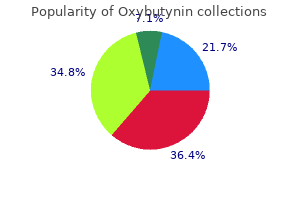
Purchase 5mg oxybutynin with visa
Primary renal graft thrombosis, outlined as thrombosis of the renal graft vasculature in the absence of histopathologic proof of rejection, normally occurs inside 10 days of renal transplant and virtually at all times ends in loss of the graft. Thrombosis is as prone to be arterial as venous and happens in approximately 2% (range 1% to 6%) of recipients. The usual presentation is with sudden-onset oliguria or anuria related to a falloff in graft operate. In the case of renal vein thrombosis, there may be pain at the graft site, hematuria, and even graft rupture. A number of retrospective case-control studies367-369 and a prospective study370 have demonstrated that one or more of these thrombophilias are associated with an estimated 3- to 10-fold elevated danger for renal graft thrombosis. It has not been established by acceptable potential randomized examine whether antithrombotic prophylaxis can prevent early renal graft thrombosis. In the previous, orthopedic providers tended to be extra (>85%) compliant with published pointers, probably reflecting the longer history of use. Renal Transplantation In the United States, approximately 14,000 renal transplants are carried out yearly. This advice is supported by animal information demonstrating that the danger for intracranial hemorrhage with full-intensity heparin anticoagulation within the postoperative interval following craniotomy dropped off sharply between the seventh and 10th postoperative day. At the opposite end of the spectrum, anticoagulation after minor procedures in patients judged to be at low risk for bleeding can most likely be initiated after 12 to 24 hours. Kearon C, Hirsh J: Management of anticoagulation before and after elective surgery. Gabriel P, Mazoit X, Ecoffey C: Relationship between scientific historical past, coagulation checks, and perioperative bleeding during tonsillectomies in pediatrics. Cammerer U, Dietrich W, Rampf T, et al: the predictive worth of modified computerized thromboelastography and platelet function analysis for postoperative blood loss in routine cardiac surgery. Ansell J, Klassen V, Lew R, et al: Does desmopressin acetate prophylaxis scale back blood loss after valvular coronary heart operations Ozkisacik E, Islamoglu F, Posacioglu H, et al: Desmopressin usage in elective cardiac surgical procedure. Ozier Y, Schlumberger S: Pharmacological approaches to decreasing blood loss and transfusions in the surgical affected person. Crescenzi G, Landoni G, Biondi-Zoccai G, et al: Desmopressin reduces transfusion wants after surgery: A meta-analysis of randomized clinical trials. Steinlechner B, Zeidler P, Base E, et al: Patients with severe aortic valve stenosis and impaired platelet function profit from preoperative desmopressin infusion. Barnard J, Millner R: A evaluate of topical hemostatic brokers for use in cardiac surgical procedure. Laupacis A, Fergusson D: Drugs to reduce perioperative blood loss in cardiac surgery: Meta-analyses using perioperative blood transfusion as the outcome. Zufferey P, Merquiol F, Laporte S, et al: Do antifibrinolytics scale back allogeneic blood transfusion in orthopedic surgical procedure Crescenti A, Borghi G, Bignami E, et al: Intraoperative use of tranexamic acid to cut back transfusion price in sufferers undergoing radical retropubic prostatectomy: Double blind, randomised, placebo managed trial. Tranexamic acid reduces blood loss, transfusion necessities, and coagulation factor use in main orthotopic liver transplantation. Dalmau A, Sabate A, Acosta F, et al: Tranexamic acid reduces pink cell transfusion better than epsilon-aminocaproic acid or placebo in liver transplantation. Henry D, Carless P, Fergusson D, et al: the security of aprotinin and lysine-derived antifibrinolytic medication in cardiac surgery: A meta-analysis. Trzebicki J, Kosieradzki M, Flakiewicz E, et al: Detrimental effect of aprotinin ban on amount of blood loss throughout liver transplantation: Single-center experience. Practice tips for blood component remedy: A report by the American Society of Anesthesiologists Task Force on Blood Component Therapy. Okuda K, Ohnishi K, Kimura K, et al: Incidence of portal vein thrombosis in liver cirrhosis. Francoz C, Belghiti J, Vilgrain V, et al: Splanchnic vein thrombosis in candidates for liver transplantation: Usefulness of screening and anticoagulation. Gatt A, Riddell A, Calvaruso V, et al: Enhanced thrombin technology in patients with cirrhosis-induced coagulopathy.
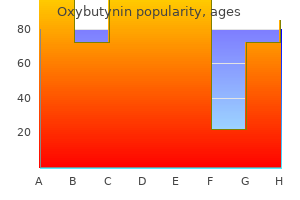
Generic oxybutynin 5mg online
Genetic analysis will result in new remedy prospects and improved diagnostic tools over the next 10�15 years. Linkage between immunoglobulin E responses underlying bronchial asthma and rhinitis and chromosome 11q. The promise of gene remedy in treating a wide range of diseases is, simply put, unbelievable. This promise has captured the hopes and enthusiasm of the scientific and lay communities alike. In actuality, however, progress in bringing the attract of the science to a useful scientific application has been quite limited. While nice strides have been made in understanding the complexities of disease states and vectors, the limitations to medical utility continue to be formidable. These research deliver genetic material to target cells through vectors, which act as supply vehicles to bypass host defences. The treatment goals to replace or repair the defective gene inflicting a given illness or to provide a new or altered function in a cell. The commonest vectors are a selection of replication-deficient viruses although nonviral vectors, such as liposomes, are also used. In reviewing progress to date in gene therapy, two diseases of curiosity to otolaryngologists encapsulate the potential and difficulties of this method. We will evaluation an apparently attractive candidate for gene therapy, a illness caused by a single mutation inherited in an autosomal recessive fashion � cystic fibrosis. These two numerous diseases serve to illustrate most of the ideas, advances and frustrations of gene therapy. It is the most typical lethal genetic disease of one of many wealthiest racial subgroups on the earth. It is inherited with an autosomal recessive sample with provider charges of 5 % in some Caucasian populations. Unfortunately, the disease remains nearly uniformly deadly, invariably from its pulmonary sequelae. Other mutations, now numbering almost one thousand, are unusual, occurring in lower than 1 p.c of screened populations. The risk of a major adverse response in a localized area of the nose or sinuses is clearly much less. These patients invariably have severe pre-existing pulmonary compromise and any incremental advantages in pulmonary operate afforded by gene remedy would be tough to measure. Nasal mucosa maintains and generates a potential distinction throughout its floor and a attribute voltage trace may be obtained in regular sufferers. This potential could be readily and reproducibly measured, in distinction to a variety of bronchopulmonary indices and has been a goal of gene therapy methods within the nostril. In vitro and animal studies Initially, the feasibility of gene transfer to airway cells was demonstrated in vitro and then in quite a lot of animal experiments. The prospect of an opposed reaction to vector administration within the lungs of a affected person with pre-existing pulmonary compromise is Human adenovirus research � viral vectors Most of the early human cystic fibrosis gene therapy trials in the United States employed adenoviral vectors. Adenovirus has a level of tropism for respiratory mucosa and a substantial body of knowledge already existed about adenoviruses as respiratory pathogens. The viruses are thus replication-deficient, however nonetheless remain sufficiently active to transport genetic material into the goal cell. This report was notable for the extensively publicized event of pulmonary toxicity in one of many participants following vector supply to the lungs. This toxicity was thought to be due to vector-induced irritation and a discount of viral vector dose has largely overcome the issue of acute inflammation in subsequent studies. Their experiment concerned administration of logarithmically growing vector doses to four cohorts of three patients. In this series, the correction of the nasal potential was extra subtle and, importantly, proof of immunologic response to repeat administration was noted. Studies involving intrapulmonary vector administration have scarcely fared better.
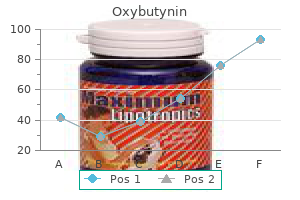
Purchase 5 mg oxybutynin mastercard
The differential prognosis is broad and contains septicemia, hypoxia, and start trauma, amongst other components (Table 133-3). Without treatment, thrombocytopenia may final for days, but often, it can be extreme and may persist for lots of weeks. Bleeding symptoms range from petechiae and bruising to gastrointestinal or intracranial hemorrhage. For infants with extreme thrombocytopenia, mortality estimates of 10% have been reported, and infants with intracranial bleeding may be left with developmental delays and severe, lifelong neurologic deficits. Splenectomy has been used for lots of years and is the treatment possibility more than likely to be related to sturdy remissions. Rituximab may obtain a platelet depend response in as a lot as 60% of patients, but responses are hardly ever sustained previous 6 to 12 months. Maternal blood samples are examined for platelet antigens (phenotyping and polymerase chain response genotyping) and platelet alloantibodies. Amniocentesis and fetal genotyping are really helpful when the father is known to be heterozygous for the incompatible antigen. Serologic affirmation, which requires the documentation of maternal alloantibodies, is tougher for 2 reasons. First, the expertise is complicated, and relatively few laboratories carry out these checks. In general, most commercial assays detect platelet alloantibodies directed in opposition to solely a restricted number of antigens. This limitation necessitates the use of extra specific assays, corresponding to monoclonal antibody immobilization of platelet antigen assays or antigen seize assays. An various methodology makes use of radioimmunoprecipitation, which may detect the entire recognized alloantibodies described to date. To date, all of those antigens are the end result of single nucleotide polymorphisms or in-frame deletions of the codon. Consequently, platelet typing using genetic analysis is relatively easy. The exception is if the father is heterozygous for the implicated platelet antigen, by which case antigenic testing could be carried out by amniocentesis to determine if the fetus is at risk and whether or not therapy is required. Fetal Monitoring During Pregnancy Serial ultrasonography is indicated for fetal surveillance. This supplies a simple, noninvasive methodology for identifying fetal bleeds at an early stage. It is necessary to respect that moderate or extreme thrombocytopenia at delivery (20-50 � 109/L) can worsen over the following few days. However, if these are unavailable, random donor platelets can be utilized as a outcome of they produce adequate will increase within the platelet count. Nonetheless, deliberate cesarean section supply can ensure that personnel and sources, together with antigen-compatible platelet transfusions, are available directly. She is receiving intravenous ampicillin and prophylactic doses of the low-molecular-weight heparin dalteparin. On bodily examination, she has intensive oral mucosal purpura and petechiae on each decrease extremities. Three days later, the platelet depend is four � 109/L, and the affected person develops melena. It happens in patients-usually women-who have been beforehand sensitized to platelet-specific antigens and who develop a severe immune response after exposure to platelets or platelet antigenic materials in blood transfusions. The thrombocytopenia occurs 7 to 10 days after blood transfusion and usually resolves within weeks. However, the temporal association with blood transfusion and the severity of the bleeding suggest the analysis. Epidemiology Posttransfusion purpura is uncommon with an estimated incidence of 1 to two per one hundred,000 transfusions. In a report of 61 patients, the sensitizing occasion among girls was being pregnant alone in 58%, being pregnant or transfusion in 34%, and transfusion alone in 7. The frequency of immunization is determined by platelet alloantigen discrepancy plus the presence of sure immune response genes. Furthermore, platelet reactive antibodies can be eluted from each antigen-positive and -negative platelets.
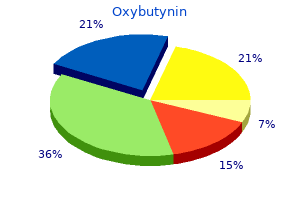
Buy cheap oxybutynin 2.5 mg on-line
Catheter-related trauma, leading to mural dissection, puncture-site pseudoaneurysm, and/or main hematoma happens in 1% to 2% of patients. The Rochester Trial randomized 114 sufferers presenting with acute limb ischemia to catheter-directed urokinase infusion or surgical procedure. However, in these with persistent ischemia, surgery was related to fewer amputations and improved amputation-free survival (Table 145-1). In a subgroup evaluation, the sufferers with acute bypass graft occlusions had a considerably lower rate of amputations in contrast with these patients who underwent surgery. Irreversible Description / Prognosis Not instantly threatened Salvageable if promptly treated Salvageable with immediate revascularization Major tissue loss or everlasting nerve damage inevitable Sensory Loss None Minimal (toes) or none More than toes, related to relaxation ache Profound, anesthetic Muscle Weakness None None Mild, Moderate Profound, paralysis (rigor) Arterial Audible (Often) Audible (Usually) Audible Inaudible Doppler Signal Venous Audible Audible Audible Inaudible From [no authors listed]: Results of a prospective randomized trial evaluating surgery versus thrombolysis for ischemia of the lower extremity. In severe instances, sufferers may expertise short-distance venous claudication and venous leg ulcers-both of which restrict ambulation and the power to work and perform the actions of every day living. The mixture of valvular reflux and obstruction causes ambulatory venous hypertension, which finally ends up in edema, tissue hypoxia and damage, progressive calf pump dysfunction, subcutaneous fibrosis, and pores and skin ulceration. In support of this "open vein" hypothesis are studies that have observed a strong correlation between the amount of residual thrombus after a course of anticoagulant remedy and the next incidence of recurrent venous thromboembolism. Ultrasound-guided access to an extremity vein, often the popliteal vein for the decrease extremity, is obtained. In patients with primary axillosubclavian venous thrombosis ("effort thrombosis"), stenosis of the subclavian vein is usually recognized and is greatest handled with surgical thoracic outlet decompression rather than aggressive balloon angioplasty or stenting. With uncommon exceptions, stent placement in the subclavian vein is contraindicated because of the high frequency of stent fractures. Currently out there anticoagulants are efficient in reaching these targets in most sufferers. However, these research have limitations, including surrogate consequence measures, inclusion of only a singlecenter, small pattern size, and/or nonrandomized design. Factors associated with an increased danger for bleeding include ongoing or latest bleeding; latest major surgery, trauma, being pregnant, obstetrical delivery, or cardiopulmonary resuscitation; or the presence of lesions in critical areas such as the central nervous system that will bleed. The use of endovascular thrombolysis in these situations is justifiable when different treatment choices are missing. The extent of thrombosis is a vital predictor of medical course and long-term end result with anticoagulant therapy. In particular, with femoral vein thrombosis, the first collateral route by which blood leaves the limb (and by which the venous obstruction is decompressed) is the deep (profunda) femoral vein, which empties into the frequent femoral vein within the groin. These sufferers are readily recognized as a outcome of they often present with swelling of the whole limb and most have compression ultrasound proof of thrombus within the widespread femoral vein. Despite restricted proof of benefit, elastic compression stockings are often used because of their low risk and prepared availability. A, A transjugular pelvic venogram demonstrates continual narrowing of the proper iliac vein with collateral formation. The ache and swelling improved, and the patient was subsequently capable of return to work. Although many filters are positioned with the intent to be retrieved, less than 50% are removed. Therefore an individualized approach is really helpful to make sure that harms are minimized and applicable patients are selected for intervention. Multidisciplinary collaboration between internists and endovascular physicians is required to guarantee optimal patient care. Thrombolysis in the management of lower limb peripheral arterial occlusion-a consensus doc. Results of a potential randomized trial evaluating surgical procedure versus thrombolysis for ischemia of the lower extremity. Elsharawy M, Elzayat E: Early outcomes of thrombolysis vs anticoagulation in iliofemoral venous thrombosis. Raju S, Neglen P: Percutaneous recanalization of complete occlusions of the iliac vein. Silverstein Morbidity and mortality from atherosclerosis, the pathologic course of underlying acute myocardial infarction, sudden demise, stroke, and limb loss, represent an enormous burden on society and health care techniques. Even although death rates from coronary heart assault and stroke have dropped precipitously over the past 60 years (69% and 76%, respectively, from 1950 to 2006), cardiovascular illnesses are still the primary reason for demise in the United States, accounting for more than 25% of all deaths-approximately 2300 per day.
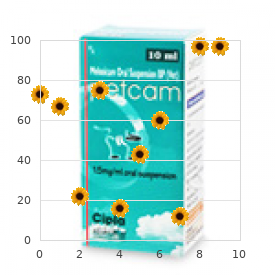
Buy oxybutynin with a mastercard
Variability could also be related partly to the quantity of issue V related to platelets. Mucosal bleeding is the primary abnormality, with 60% of sufferers experiencing epistaxis, menorrhagia, or oral bleeding. Hematomas and hemarthroses happen in 25% of sufferers, however debilitating arthropathy is unusual. Severe bleeding within the central nervous system or gastrointestinal tract has been reported, however that is relatively rare. Trauma, surgical procedure, and dental extraction are related to a excessive threat for bleeding in untreated patients. Bleeding with surgery involving the urogenital tract, the nose, or the mouth may be particularly problematic because of excessive native fibrinolytic activity. Mild (heterozygous) factor V deficiency (25% to 60% of normal issue level) is normally not related to excessive bleeding, though 10% of sufferers report some bleeding. Indeed, with the exception of deficiency of prothrombin or issue X, thrombotic events have been reported in all extreme coagulation issue deficiency states. Deficiency can occur in sufferers with the widespread procoagulant issue V polymorphism Arg506Gln (factor V Leiden). Alternatively, Arg506Gln might occur on the same allele as a null mutation (in-cis), which will masks the prothrombotic effect of Arg506Gln. Factor V is required for normal prothrombin activation by issue Xa within the prothrombinase advanced. The thrombin time must be normal, except in cases of inhibition induced by bovine topical thrombin, the place antithrombin antibodies towards thrombin are also present. No issue V concentrate is commercially out there with which to treat poor sufferers (see Table 139-2). Estimates of the issue V plasma half-life differ widely, however 12 to 14 hours could be assumed for replacement purposes. Plasma change has been successful in a few factor V�deficient patients requiring surgery. Mucosal bleeding from the nose and mouth may reply to -amino caproic acid, and superficial lacerations usually reply to local stress. Symptoms could additionally be managed by antifibrinolytic remedy (-amino caproic acid 50 to 60 mg/kg each four to 6 hours or tranexamic acid 15 mg/ kg each 6 to eight hours), oral contraceptives, levonorgesterol intrauterine units, substitute therapy, or surgical intervention (endometrial ablation or hysterectomy). Factor V�deficient ladies may have significant bleeding with childbirth and ought to be treated in an identical manner. Platelets are a source of factor V and may be notably useful in patients with severe bleeding or issue V inhibitors. Platelet factor V might either be protected from inhibition or may be sufficiently different in construction from its plasma counterpart to not cross-react with antibodies directed at issue V. A severity classification system based mostly on clinical presentation has additionally been instructed. Not surprisingly, significant bleeding tends to be biggest with extreme deficiency, and sufferers with ranges lower than 1% of regular could have a syndrome similar to severe hemophilia, with spontaneous joint and delicate tissue bleeding and hemarthrosis-related arthropathy. Excessive bleeding often complicates dental extraction and surgery on the oropharynx or urogenital tract in untreated patients. Abdominal surgical procedure and hysterectomy are related to fewer problems, doubtless reflecting various ranges of fibrinolytic activity in numerous tissues. A research of 33 reported cases (6 arterial, 27 venous) revealed 15 with molecular studies. Nearly all patients had different thrombotic risk factors, normally acquired, and four had congenital thrombophilia. Therapy with low-molecular-weight heparin or one of many newer direct thrombin or factor Xa inhibitors may be a better possibility. A dose of 15 to 30 mcg/kg physique weight every 2 to 6 hours will usually achieve hemostasis, with the frequency adjusted to the scientific scenario.
Oxybutynin 5 mg lowest price
In phrases of the poor tumor control noted in some trials of erythropoietin, it has been famous that many tumor cells categorical erythropoietin receptors, and in fact elevated erythropoietin receptor expression may be a poor prognostic indicator in plenty of tumors. Erythropoietin signaling can function a survival sign, suggesting that targeting the erythropoietin receptor may be a therapeutic strategy in most cancers therapy. It is evident that many dose-intensive regimens, a few of which may be more effective than less intensive regimens, are attainable solely with the support of myeloid development factors. Use of myeloid progress factors throughout chemotherapy for stable tumors has been theorized to promote leukemia threat, by appearing as a survival sign to hematopoietic progenitor cells damaged by chemotherapy. Armand Trousseau was the primary to affiliate thrombosis and malignancy, the first to recommend screening for malignancy in recurrent or idiopathic thromboembolic disease, the first to counsel that the pathophysiology was not mechanical obstruction, however a change in the character in the coagulation system itself, and the first to counsel that the association could also be integral to the cancer progress itself. What has made this association particularly poignant was the fact that Trousseau predicted his personal occult malignancy when he developed "phlebitis," dying 6 months later of gastric cancer. More recently, a variety of the biologic mechanisms underlying the increased risk for thrombosis in patients with most cancers have been higher delineated (see later). Patients with active malignancy have a higher risk for thrombosis than other medical patients, and surgical oncology sufferers have a better thrombosis rate than other surgical patients undergoing main procedures. In comparability, the widespread hereditary thrombophilia, heterozygous issue V Leiden, will increase the danger for venous thrombosis by approximately 5-fold (see Chapter 142). Arterial and venous thrombosis are second solely to progression of illness as a reason for demise among cancer sufferers, accounting for 9. The reported adjusted odds ratios for thrombosis for a given tumor kind varies significantly, primarily based on the methodology to capture the thrombosis diagnosis. Virtually all stable tumor sorts, as nicely as hematologic malignancies, result in a significantly elevated threat for thrombosis, and secondly, sure tumor sorts persistently seem to have particularly excessive risk for thrombosis, including lung, pancreas and different gastrointestinal cancers, and brain tumor. In sufferers with advanced cancer, those who current with venous thromboembolic illness have a 1-year survival of 12%, in contrast with 1-year survival of 36% in sufferers with superior most cancers presenting without thrombosis. One key question is whether or not the thrombotic tendency in some sufferers is generally a marker of a extra aggressive disease or the development of thrombosis is a significant explanation for increased mortality. Thrombosis is the second leading reason for death in outpatient chemotherapy patients, but of the 9. Diagnosis of Coagulopathies in Cancer Patients Thrombotic episodes in patients with most cancers are typically recognized equally to thrombotic occasions in sufferers without most cancers. For example, thromboses could also be confused with both intravascular illness development and/or intravascular fungal infections. In many circumstances, the analysis of thromboses or an abnormality in coagulation may be made in an asymptomatic patient, leading to a troublesome decision concerning the risks and advantages of correction. The constitutive activation of the coagulation system by most cancers has been properly documented. Elevated levels of markers of in vivo coagulation activation, together with thrombin-antithrombin complexes, prothrombin F1+2 activation peptide, and fibrin degradation merchandise, together with fibrinopeptide A and D-dimer have been described. In two potential studies of routine coagulation parameters in most cancers patients, elevated fibrinogen and platelet counts have been probably the most frequent alterations. This routine has been the mainstay of thrombosis management since 1960, and countless patients have benefited from this remedy routine. In basic, anticoagulation ought to continue so lengthy as the affected person has a hypercoagulable state. However, the clinician should often reassess the risks and advantages of anticoagulation for every patient. Microparticles are vesicular buildings launched from cell membranes underneath a spread of situations, including activation, malignant transformation, stress, or demise and are detected in plasma in a extensive range of disease states, including sepsis and most cancers. The 12-month cumulative incidence of recurrent thromboembolism in most cancers patients was 20. Cancer sufferers have variable nutritional intake, with variable vitamin K of their diets, and frequent use of antibiotics results in highly variable bioavailability of the dietary vitamin K. The hazard ratio for recurrent thromboembolism in the dalteparin group compared with the oral-anticoagulant group was zero. Of notice, regardless of the marked reduction within the rate of recurrent thrombosis by the dalteparin, the general survival price was not affected.
Real Experiences: Customer Reviews on Oxybutynin
Altus, 63 years: Trindade E, Maton P, Reding R, et al: Use of granulocyte macrophage colony stimulating factor in youngsters after orthotopic liver transplantation.
Amul, 22 years: These low- and high-pretest possibilities may be mixed with the results of goal noninvasive exams to make medical decisions.
Kalan, 54 years: Campbell W, Okada N, Okada H: Carboxypeptidase R is an inactivator of complement-derived inflammatory peptides and an inhibitor of fibrinolysis.
8 of 10 - Review by M. Achmed
Votes: 98 votes
Total customer reviews: 98
References
- Ribes A, Riudor E, Garavaglia B. Mild or absent clinical signs in twin sisters with short-chain acyl-CoA dehydrogenase deficiency. Eur J Pediatr 1998;157:317.
- Liu V, Dhillon GS, Weill D. A multidrug regimen for respiratory syncytial virus and parainfluenza virus infections in adult lung and heart-lung transplant recipients. Transpl Infect Dis 2009;12:38-44.
- Gibson WH, Roughton FJ: The kinetics and equilibria of the reactions of nitric oxide with sheep haemoglobin, J Physiol 136(3):507-524, 1957.
- Abrams ME, Meredith KS, Kinnard R, et al: Hydrops fetalis: A retrospective review of cases reported to a large national database and identification of risk factors associated with death. Pediatrics 2007; 120:84-89.
- Ben-Zvi T, Hueber PA, Liberman D, et al: GreenLight XPS 180W vs HPS 120W laser therapy for benign prostate hyperplasia: a prospective comparative analysis after 200 cases in a single-center study, Urology 81(4):853n858, 2013.
- Stoffel J, Lightner D, Peterson A, et al: AUA White paper on non-neurogenic chronic urinary retention: consensus definition, management strategies, and future opportunities, J Urol 198:153n160, 2017.
